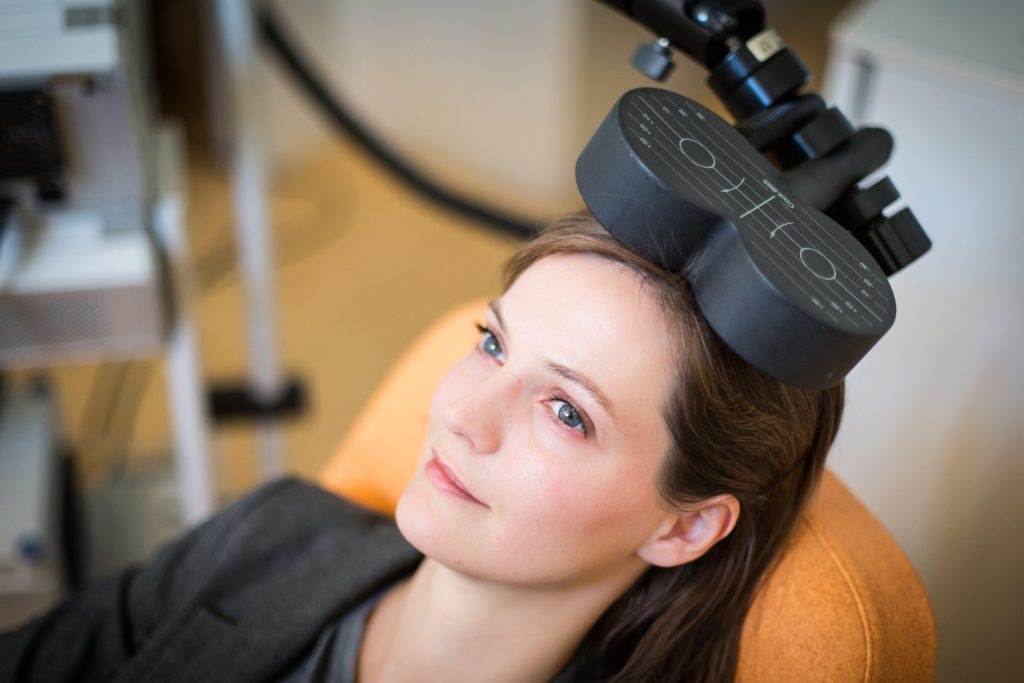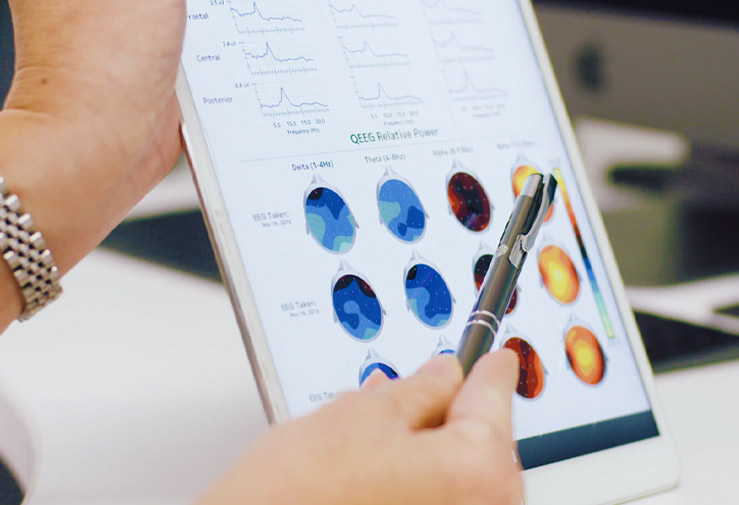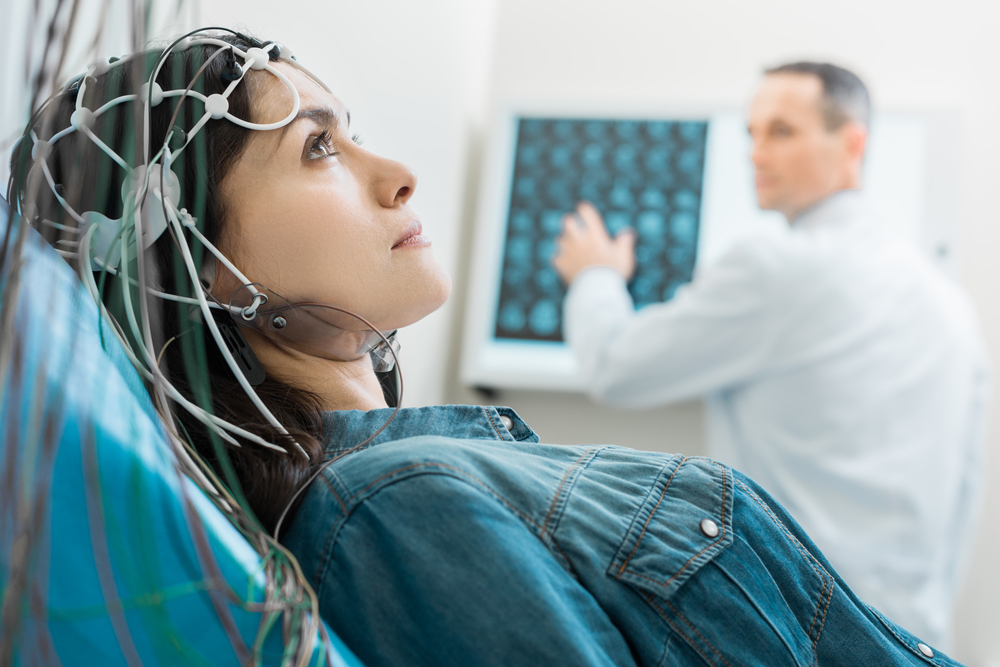
MeRT: A Breakthrough Treatment for Depression
MeRT is FDA-approved to Treat Depression, Including Treatment-Resistant Depression (TRD) and Major Depressive Disorder (MDD)
How Does MeRT Treat Depression?
MeRT stands for Magnetic e-Resonance Therapy. It uses highly customized Transcranial Magnetic Stimulation (TMS), based on sophisticated diagnostic testing.
This non-invasive, drug-free, painless treatment can bring relief to a wide range of neurological conditions. And that very much includes depression.
MeRT is so effective at treating depression that the FDA has cleared this technology to treat Major Depressive Disorder and Multiple Drug Resistant Depression.
The MeRT treatment protocol begins with a quantitative EEG (qEEG), also known as brain mapping. The qEEG report shows patterns of dysfunction that relate to specific disorders of the brain, such as depression.
Patients with depression have specific markers that show up in their EEG studies; specifically, you can see an imbalance in brainwave activity between the left and right hemispheres. This imbalance is called asymmetry.
The qEEG provides a detailed map to guide each tailored treatment. With that map, we can customize our TMS treatment to gently stimulate specifically targeted areas of the brain. As a result, patients have seen some incredible success in improving depression symptoms. And many have been able to go off their medications completely after MeRT treatment.


MeRT Treatment Gets Results

What’s Better for Depression: TMS or MeRT?
TMS has been used for years as a non-invasive method to treat depression. And it’s a vital component of the MeRT treatment protocol.
But MeRT takes things one crucial step further by adding comprehensive diagnostic testing to target the precise areas of dysfunction in the brain.
In essence, standard TMS is a one-size-fits-all approach to depression treatment. Most TMS treatments deliver stimulation to one specific area of the brain at a fixed frequency for all patients. For depression treatment, this means placing the magnetic coil over a specific area in the front part of the brain.
With MeRT, the TMS treatment is targeted to a specific area of the brain based the qEEG results. And the frequency and power of the magnetic stimulation is unique to each patient.
How MeRT Works on the Brain
EEGs (electrical pictures of the brain) can tell us when there are abnormalities in neural networks. … And we run that data through a normative database, and we can see, for example, if somebody has an area in the left prefrontal cortex that’s cycling at two Hertz — which means that they may be only processing information two times per second — whereas the rest of their brain may be cycling 11 times per second. That information mismatch may manifest for somebody who has depression. They may lack motivation, feel lethargic, not want to get out of bed.”
But in a different scenario… let’s say it is the visual cortex that’s cycling now at 30 times per second. If you’re scanning your environment 30 times per second, but [are] only able to process it 10 or 11 times per second, this information overload may manifest as anxiety. And it’s not a one-to-one correlation. Everyone experiences their world a little bit differently.
We can look at these signals and find areas that are abnormal, [then we] use this FDA cleared technology, Transcranial Magnetic Stimulation, to navigate to the area that’s not working properly and try to stimulate it and remind it that it wants to fire at a certain frequency and a certain rate.”

You CAN be Free from Depression!
It may seem impossible to imagine it now, but MeRT can free you from those debilitating depression symptoms.
Your brain is unique. Shouldn’t your treatment be just as unique? MeRT focuses on where each individual’s brain is having difficulty communicating, and strengthens those areas.
That’s why MeRT has helped thousands of people with depression feel the joy of living again.
You can, too. Take the next step by clicking on the box below, and find out if MeRT can help you.